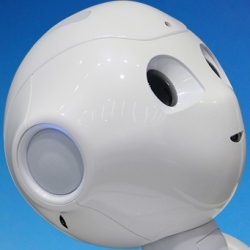
The potential of artificial intelligence and advanced robotics to perform tasks once reserved for humans is no longer reserved for spectacular demonstrations by the likes of IBM’s Watson, Rethink Robotics’ Baxter, DeepMind, or Google’s driverless car project.
Just head to an airport: automated check-in kiosks now dominate many airlines’ ticketing areas. Pilots actively steer aircraft for just three to seven minutes of many flights, with autopilot guiding the rest of the journey.
McKinsey launched research to explore workplace automation questions and investigate the potential that automation technologies hold for jobs, organizations, and the future of work.
Results to date suggest, first and foremost, that a focus on occupations is misleading. Very few occupations will be automated in their entirety in the near or medium term.
Rather, certain activities are more likely to be automated, requiring entire business processes to be transformed, and jobs performed by people to be redefined, much like the bank teller’s job was redefined with the advent of ATMs.
As many as 45 percent of the activities individuals are paid to perform can be automated by adapting currently demonstrated technologies. In the United States, these activities represent about $2 trillion in annual wages.
Although we often think of automation primarily affecting low-skill, low-wage roles, we discovered that even the highest-paid occupations in the economy, such as financial managers, physicians, and senior executives, including CEOs, have a significant amount of activity that can be automated.
The bottom line is that 45 percent of work activities could be automated using already demonstrated technology. If the technologies that process and “understand” natural language were to reach the median level of human performance, an additional 13 percent of work activities in the US economy could be automated.
The magnitude of automation potential reflects the speed with which advances in artificial intelligence and its variants, such as machine learning, are challenging our assumptions about what is automatable. It’s no longer the case that only routine, codifiable activities are candidates for automation and that activities requiring “tacit” knowledge or experience that is difficult to translate into task specifications are immune to automation.
In many cases, automation technology can already match, or even exceed, the median level of human performance required.
According to the McKinsey analysis, fewer than 5 percent of occupations can be entirely automated using current technology. However, about 60 percent of occupations could have 30 percent or more of their constituent activities automated. In other words, automation is likely to change the vast majority of occupations, at least to some degree, which will necessitate significant job redefinition and a transformation of business processes.
Mortgage-loan officers, for instance, will spend much less time inspecting and processing rote paperwork and more time reviewing exceptions, which will allow them to process more loans and spend more time advising clients. Similarly, in a world where the diagnosis of many health issues could be effectively automated, an emergency room could combine triage and diagnosis and leave doctors to focus on the most acute or unusual cases while improving accuracy for the most common issues.
Automation is not the only way to eliminate and change jobs. Unrelated to automation but just changing regulations and policies could eliminate and change many jobs.
If the US tax code were adjusted to just have a very simple flat tax and making other choices to eliminate unproductive paperwork then many jobs could be eliminated. The entire IRS could be abolished. 90,000 jobs in the IRS. Many jobs for tax accountants and tax lawyers.
